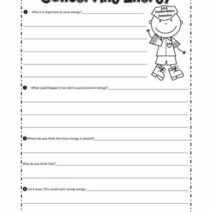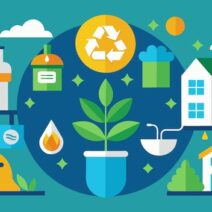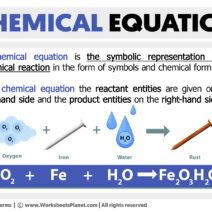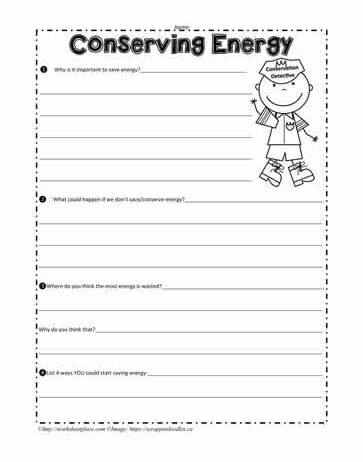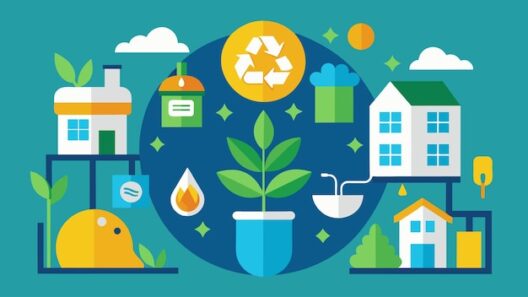In a world where the flick of a switch lights our homes and the press of a button brings warmth, we often forget the delicate balance that exists between our consumption and the finite resources of our planet. Energy conservation is not merely a personal duty; it’s a planetary imperative. A “Conserve Energy Worksheet” serves as a navigational compass, guiding individuals through the labyrinth of energy-saving activities designed for various audiences, from children to adults. These worksheets integrate learning with practical action, cultivating an awareness of the environment through engaging exercises.
Imagine energy conservation as a garden. Each act of saving energy is akin to planting a seed that, when nurtured with knowledge and action, blossoms into a vibrant and sustainable community. In this metaphorical garden, worksheets are the gardeners’ tools, helping participants to cultivate their understanding and skills in energy conservation. They serve as a fun pathway leading to the appreciation of renewable resources and the need to cherish what we have.
The essence of a “Conserve Energy Worksheet” lies in its ability to transform abstract concepts into tangible, relatable activities. To grasp the importance of energy conservation, one must actively engage with the material. Following is a plethora of invigorating activities tailored to not just inform, but to inspire.
1. The Energy Audit Challenge
Start with an energy audit of personal living spaces. Participants can create a checklist to identify energy-hungry appliances and practices. This hands-on activity encourages a meticulous examination of everyday habits — from the length of showers to the efficiency of light bulbs. As participants calculate their home’s energy usage, they become keen detectives uncovering energy footprints. Creating graphs of weekly usage can further illustrate trends and ignite discussions about alternatives.
2. Creative DIY Projects
Turning imaginative ideas into realities can be both educational and enjoyable. Participants can embark on DIY projects such as constructing solar-powered devices or designing wind turbines from recyclable materials. These projects not only stimulate creativity but also enhance understanding of renewable energy sources. By crafting tangible representations of solar panels or wind turbines, worksheet users transform theoretical learning into a practical skill set, demystifying complex technologies.
3. Energy-Saving Pledge
The act of making a pledge invokes a sense of responsibility. Encourage participants to pen down personal energy-saving commitments. This might include reducing appliance use during peak hours, employing energy-efficient light sources, or embracing a “no-plastic” policy. Sharing these pledges fosters a communal spirit and deepens accountability. Creating a “Wall of Energy-Saving Aspirations” can further fuel motivation, as participants will visualize progress and support each other in their endeavors.
4. Interactive Energy Scavenger Hunt
Dive into the depths of energy literacy through a scavenger hunt, whereby participants must locate common sources of energy waste within their communities. The hunt can be geared toward schools, neighborhoods, or even homes. Create a list of clues that prompt players to identify outdated appliances, unnecessary lights left on, or inefficient insulation. As they embark on this adventure, they’ll not only have fun but also upgrade their environmental awareness and advocacy skills.
5. The Energy Efficiency Quiz
Educating individuals is pivotal. A quiz, comprising a series of provocative questions regarding energy consumption and conservation facts, can elevate awareness. It can address subjects such as how much energy certain appliances consume or the environmental effects of excessive electricity use. By gamifying the learning process, participants will be more likely to retain information, making them champions of energy conservation.
6. The Art of Energy Talks
Facilitate discussions about energy conservation within communal spaces. Create a platform for informative sessions where participants share experiences and strategies for energy-saving. Allow them to showcase their energy-saving activities, bolstering an exchange of ideas. These dialogues not only educate but also strengthen the community bond, emphasizing the collective responsibility each person bears towards energy conservation.
7. Celebrating Energy Awareness Days
Encourage the community to celebrate days like Earth Day or World Energy Day with themed activities. Organize competitions centered on the most innovative energy-saving ideas or showcase contributions from local inventors and enthusiasts. Incorporating festivity into energy awareness can generate enthusiasm and garner wider participation. This sense of communal obligation and celebration underpins the profound interconnection we all share with our environment.
8. Reflective Journaling
Journaling can be an introspective activity that enhances sustainability awareness. Participants can document their daily energy usage alongside emotions, reflections, and insights gained through activities and challenges. Encouraging mindfulness about personal habits leads to deeper understanding and commitment toward energy savings. As they pour their thoughts onto paper, they will witness their evolution from passive consumers to conscious caretakers of the earth.
The “Conserve Energy Worksheet,” rich with engaging activities, effectively transforms a mundane topic into a vibrant tapestry of knowledge and action. By embracing numerous learning styles, it reaches a diverse audience, from the curious child to the concerned adult, underscoring that every small effort counts. The essence of energy conservation is not in the grand gestures but rather in the collective, daily choices that shape our world. Through these worksheets, the next generation will not just learn about the significance of energy conservation; they will become the stewards of a sustainable future. As we sow these seeds of knowledge, we can hope to cultivate a magnificent garden of lasting change.
